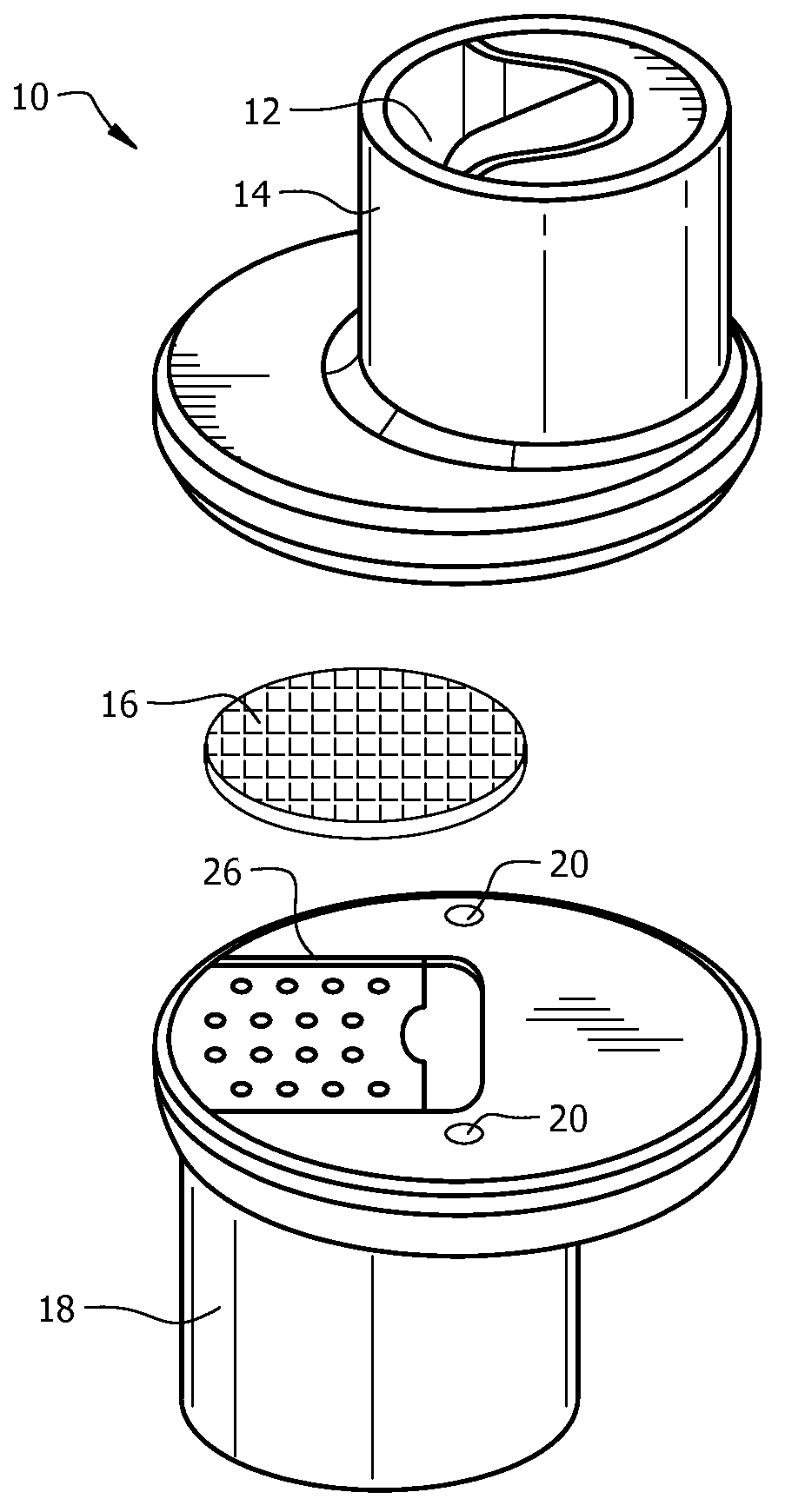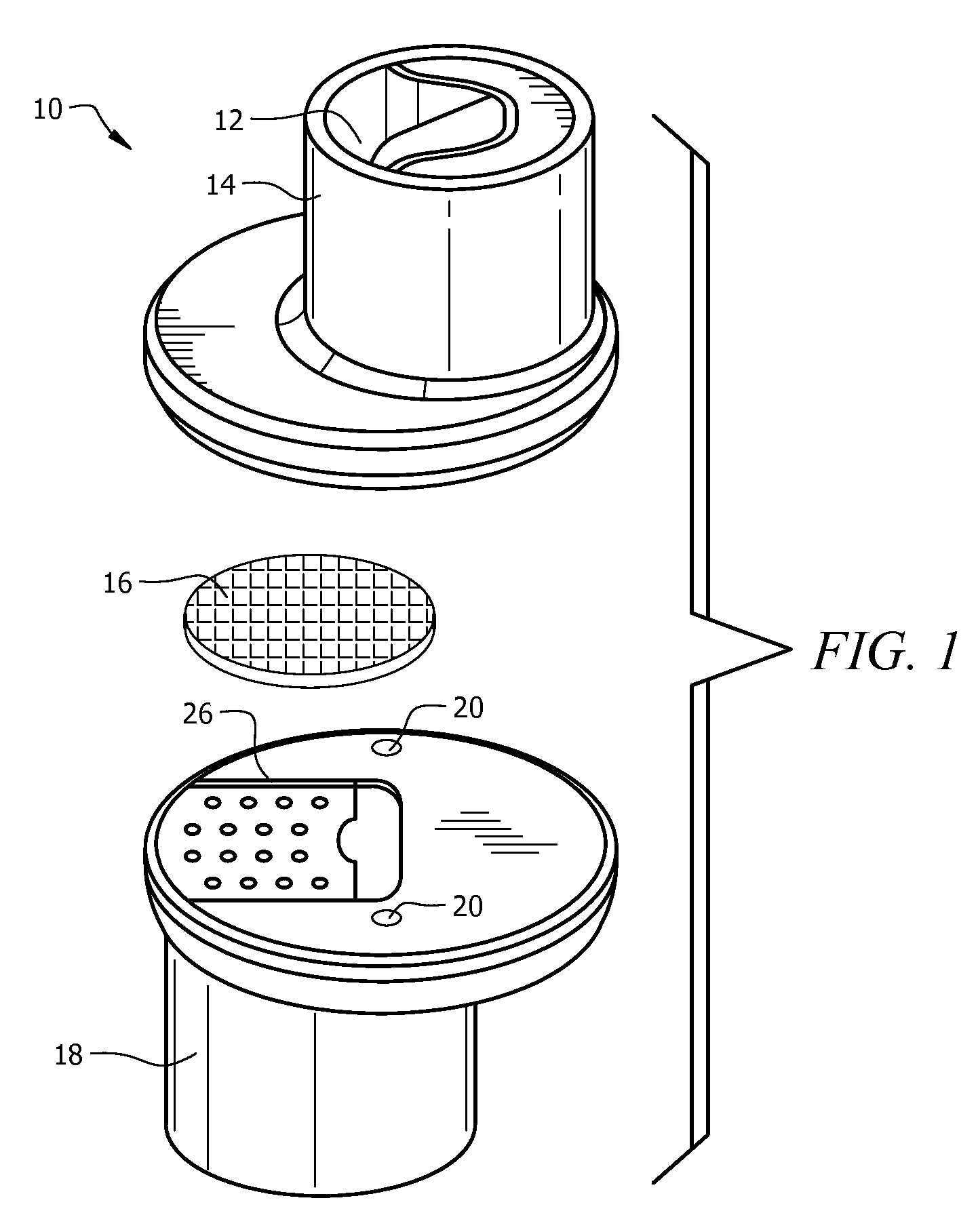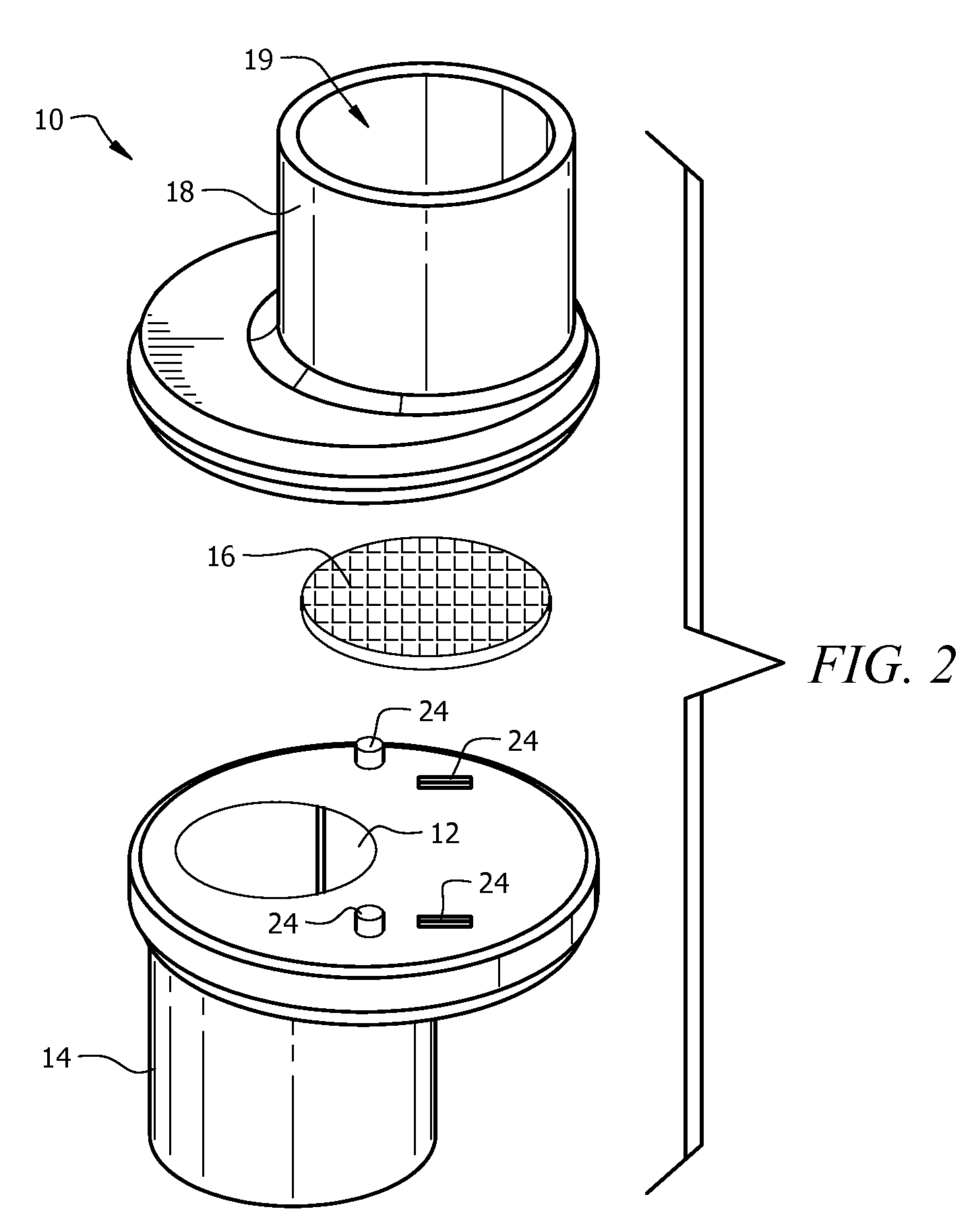Neonatal colorimetric carbon dioxide detector
a colorimetric and carbon dioxide technology, applied in the field of colorimetric carbon dioxide detectors, can solve the problem of void volume (also known as dead space) in such airway components, and achieve the effect of reducing the amount of void volum
- Summary
- Abstract
- Description
- Claims
- Application Information
AI Technical Summary
Benefits of technology
Problems solved by technology
Method used
Image
Examples
Embodiment Construction
[0015]Reference will now be made in detail to the presently preferred embodiments of the invention, examples of which are illustrated in the accompanying drawings. Throughout the following detailed description, the same reference numerals refer to the same elements in all figures.
[0016]The present invention discloses a neonatal calorimetric carbon dioxide detector 10 suited for low birth weight neonatal patients (low birth weight babies are often classified as those who weigh less than 2.5 kg).
[0017]Referring to FIGS. 1 and 2, top and bottom perspective views of a neonatal calorimetric carbon dioxide detector 10 of the present invention are shown. Although one specific method of fabrication and construction of the neonatal calorimetric carbon dioxide detector 10 is shown, many such methods and fabrication techniques are known and all are anticipated an included here within.
[0018]The example of FIGS. 1 and 2 includes a top molded section 14, a bottom molded section 18 and a calorimet...
PUM
 Login to View More
Login to View More Abstract
Description
Claims
Application Information
 Login to View More
Login to View More - R&D
- Intellectual Property
- Life Sciences
- Materials
- Tech Scout
- Unparalleled Data Quality
- Higher Quality Content
- 60% Fewer Hallucinations
Browse by: Latest US Patents, China's latest patents, Technical Efficacy Thesaurus, Application Domain, Technology Topic, Popular Technical Reports.
© 2025 PatSnap. All rights reserved.Legal|Privacy policy|Modern Slavery Act Transparency Statement|Sitemap|About US| Contact US: help@patsnap.com



